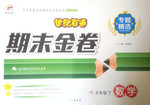题目内容
Further information can be ____________ from head office.
A. accumulated B. obtained C. boomed D. undertaken
B

 世纪百通期末金卷系列答案
世纪百通期末金卷系列答案Just the mention of the TOEFL, GRE and GAMT exams brings a thought of long hours of dull paper work. But that idea is becoming increasingly out of date. As planned, computerized tests will begin next year which will bring a series of changes  from test psychology to scoring techniques.
from test psychology to scoring techniques.
From computer - equipped rooms, examinees will answer the questions on a computer. If they are sure about their choices, they can pass to the next question by pressing the entry (条目) “next”. Then another question will be randomly (任意地) selected from a vast test item bank and appear on the screen. After answering all the questions, examinees can choose the entry “quit” if they are not satisfied with their performance, or “score” if they want to see the result. Scores will be calculated immediately and appear on the screen. By that point, student's marks are official--there is no going back.
Since they greatly shorten the painful waiting process-which used to be two or three months, computerized tests have won worldwide popularity. Besides, there will be no rushing to the registration offices (登记处) for these exams. Computerized tests will be given every workday in an exam center with all three kinds of tests being held in the same room. All test ta kers need to do is to call the exam center and book their seats for a particular day.
kers need to do is to call the exam center and book their seats for a particular day.
In addition it will become technically possible to apply new testing procedures. In the past, each examinee had the same set of test items despite differences in their ability. Under a computerized system, however, if the computer judges an answer is right, a question of a relatively difficult nature will follow. But if an examinee continues to give wrong answers and is judged as un-qualified by the computer system, he will be automatically denied the chance to go further in the test.
【小题1】 Computerized tests allow the examinee to know their scores ______.
| A.immediately on a central computer for scoring test papers |
| B.a few minutes after the exam with the help of a test center worker |
| C.on the next day after they have taken the exam |
| D.immediately after the exam by means of the same computer |
| A.he can admit defeat and give it up | B.he can ask the computer to give some advice |
| C.he can ask another chance within a few days | D.he is allowed to do it once again |
| A.different exams can be taken in the same room |
| B.one doesn’t need to rush to the registration officer for taking an exam |
| C.it will be much easier to pass an examination |
| D.one can take an exam almost at any time of the year |
| A.refused | B.allowed | C.lost | D.passed |
The flag, the most common symbol of a nation in the modern world, is also one of the most ancient. With a clear symbolic meaning, the flag in the traditional form is still used today to mark buildings, ships and other vehicles related to a country.
The national flag as we know it today is in no way a primitive artifact. It is, rather, the product of thousands of years’ development. Historians believe that it had two major ancestors, of which the earlier served to show wind direction.
Early human beings used very fragile houses and boats. Often strong winds would tear roofs from houses or cause high waves that endangered travelers. People’s food supplies were similarly vulnerable. Even after they had learned how to plant grains, they still needed help from nature to ensure good harvests. Therefore they feared and depended on the power of the wind, which could bring warmth from one direction and cold from another.
Using a simple piece of cloth tied to the top of a post to tell the direction of the wind was more dependable than earlier methods, such as watching the rising of smoke from a fire. The connection of the flag with heavenly power was therefore reasonable. Early human societies began to fix long pieces of cloth to the tops of totems (图腾) before carrying them into battle. They believed that the power of the wind would be added to the good wishes of the gods and ancestors represented by the totems themselves.
These flags developed very slowly into modern flags. The first known flag of a nation or a ruler was unmarked: The king of China around 1,000 B.C. was known to have a white flag carried ahead of him. This practice might have been learned from Egyptians even further in the past, but it was from China that it spread over trade routes through India, then across Arab lands, and finally to Europe, where it met up with the other ancestor of the national flag.
【小题1】 The underlined word “ vulnerable” in paragraph 3 means _______.
| A.easy to damage | B.likely to be protected |
| C.impossible to make sure of | D.difficult to find |
| A.could tell wind direction | B.could bring good luck to fighters |
| C.were believed to stand for natural forces | D.were handed down by the ancestors |
| A.He knows when it was sent to Europe. | B.He doubts where it started. |
| C.He thinks it came from China. | D.He believes it was made in Egypt. |
| A.The role of China in the spread of the national flag. |
| B.The importance of modern flags. |
| C.The use of modern flags in Europe. |
| D.The second ancestor of the national flag. |